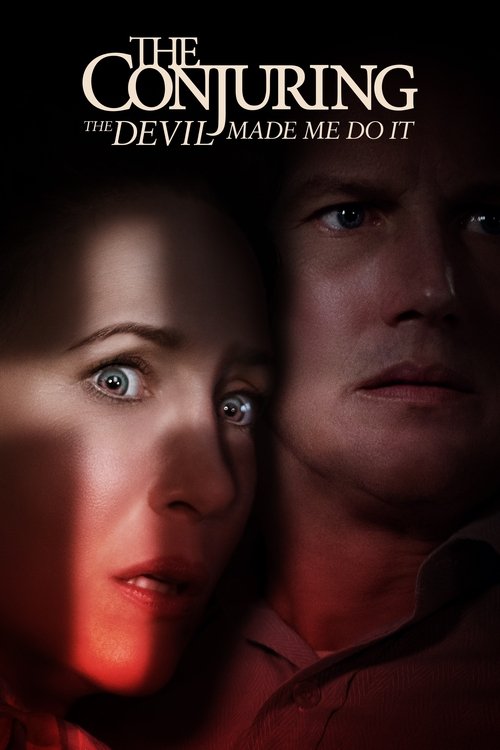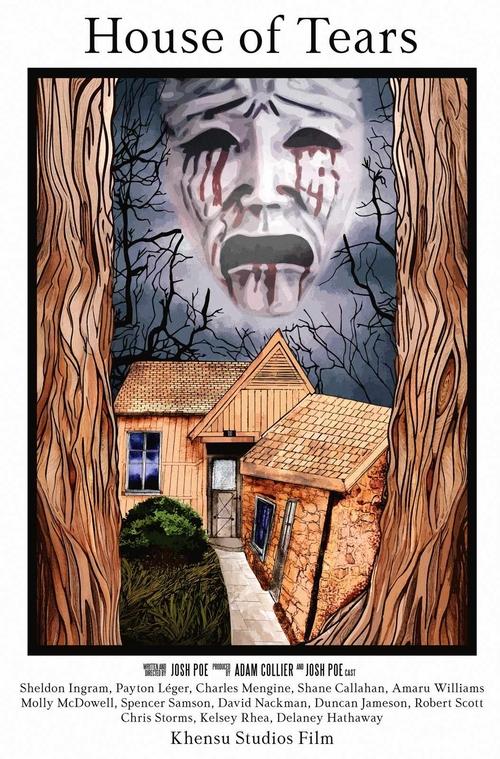
Ask Your Own Question
What is the plot?
Koreatown Ghost Story: Complete Plot Narrative
Hannah arrives at the sprawling modern mansion of Mrs. Moon on an autumn afternoon during Chuseok, the Korean harvest festival that celebrates the living and welcomes back the spirits of the dead. She is a struggling artist who works at a hardware store to support her creative dreams, and she approaches the visit with a mixture of politeness and apprehension. Mrs. Moon, her childhood neighbor, has invited her for an acupuncture appointment--a routine visit that will transform into something far more sinister.
Mrs. Moon greets Hannah warmly at the door, her successful medical practice evident in the elegant furnishings and professional setup of her home. The acupuncturist is celebrating Chuseok in traditional style, and she takes time to explain the festival to the Westernized Hannah. "Chuseok," Mrs. Moon explains, "is like Thanksgiving meets Halloween. We have a big harvest feast and we feed ourselves, and the spirits of the dead." The explanation seems innocent enough, a cultural lesson from an old family friend. But beneath Mrs. Moon's gracious demeanor lies a darker purpose.
As Hannah settles in for her appointment, Mrs. Moon begins to probe into her personal life with increasing intensity. The conversation shifts from pleasantries to something more invasive and uncomfortable. Mrs. Moon pressures Hannah relentlessly about finding a man, suggesting her own son Edward as a suitable match. Hannah, needle-phobic and eager to deflect the uncomfortable questioning, tries to change the subject. But Mrs. Moon persists, her tone becoming more insistent, more demanding. There is something almost desperate in her insistence that Hannah needs a husband, that she needs Edward specifically.
Then comes the revelation that changes everything: Edward is dead. Hannah expresses her condolences, her sympathy genuine. But Mrs. Moon's response is chilling. "I'm an American success," she says, her voice hardening. "Thriving medical practice. But my only son died in my arms." The words hang in the air between them, heavy with grief and something darker--a refusal to accept death as an ending.
Mrs. Moon begins to explain the true purpose of Hannah's visit. When Hannah and Edward were children, their parents made a pact together. It was a traditional arrangement, the kind that bound families across generations. Hannah and Edward were promised to each other as husband and wife. Mrs. Moon speaks of this obligation as though it remains binding, as though death itself cannot dissolve such a sacred promise. "When you and Edward were kids, your parents and I made a pact. We promised you and Edward to each other, like husband and wife."
Hannah tries to protest, to explain that this is impossible, that times have changed, that Edward is gone. But Mrs. Moon is unmoved. She reveals the true scope of her desperation: she is dying. Cancer is ravaging her body, spreading through her entire system. She has no heirs, no one to inherit her house, her properties, her fortune. The thought of her son being left alone in death, uncared for, unremembered, is unbearable to her. She cannot accept that Edward will simply fade away, forgotten and abandoned.
Then Mrs. Moon makes her proposition, framing it as an offer rather than a threat. "I could die knowing that my Edward is being taken care of. And you could have financial independence. You can paint, maybe even open your own gallery." She dangles Hannah's dreams before her--the freedom to pursue her art, to escape the hardware store, to build the life she has always wanted. All Hannah has to do is agree to a spirit marriage, a ghost marriage that would bind her to Edward's spirit even in death.
"What do you say Hana-Ya?" Mrs. Moon asks, her voice almost gentle, almost reasonable. "Isn't it time to get your life together?"
Hannah hesitates, caught between the promise of her dreams and the horror of what is being asked of her. But before she can fully process what is happening, Mrs. Moon moves forward with her plan. She positions Hannah on the massage table, and Hannah finds herself lying down, vulnerable and exposed. Mrs. Moon begins the acupuncture treatment, inserting needles with practiced precision. But these needles are not meant to heal. They are meant to paralyze.
As the needles penetrate Hannah's skin, she feels her body becoming increasingly immobilized. She tries to move, to get up, to flee, but her limbs no longer respond to her commands. "Wait, I can't move, what did you do?" she cries out in panic. Mrs. Moon stands over her, and Hannah realizes with horror that she is completely trapped, completely at Mrs. Moon's mercy.
The directors capture this moment with devastating effectiveness. The camera positions itself below the massage table, holding steady on Hannah's face as the needles are inserted. From this angle, the viewer experiences Hannah's helplessness directly--paralyzed alongside her, unable to do anything but watch as her fate unfolds. The claustrophobia is suffocating. Hannah is pinned to the table, unable to escape, unable to resist what comes next.
With Hannah immobilized, Mrs. Moon proceeds with the ghost marriage ceremony. She produces a wedding ring--but this is no ordinary ring. It is spectral, ghostly, a manifestation of supernatural power. As Mrs. Moon places it on Hannah's ring finger, Hannah feels it settle onto her skin with an otherworldly weight. The ring is cold, impossibly cold, and it seems to bind itself to her flesh with supernatural force.
The presence of Edward's ghost becomes palpable in the room. Though he does not appear in physical form, his spiritual presence is undeniable. The ring on Hannah's finger is his claim on her, his binding to her across the boundary between life and death. Hannah is no longer simply a woman lying paralyzed on a massage table--she is now spiritually married to a dead man, bound to him by forces beyond the natural world.
The horror intensifies as Hannah realizes the full implications of what has happened. This is not a symbolic gesture or a cultural performance. The ghost marriage has real supernatural consequences. She is genuinely bound to Edward's spirit, and that binding is manifested in the physical form of the ring on her finger. The ring represents an unbreakable connection, an obligation that transcends death itself.
As the paralysis begins to wear off and Hannah regains some mobility, she becomes desperate to free herself from the ring. She pulls at it, twists it, tries every method she can think of to remove it. But the ring will not budge. It is fused to her finger by supernatural force, immovable and unyielding. In her desperation and horror, Hannah realizes what she must do.
The most harrowing moment of the film arrives when Hannah understands that the only way to free herself from the ghostly ring is to deglove her ring finger--to strip away the skin and flesh from her finger to remove the ring. It is an act of self-mutilation, a physical manifestation of the psychological torture she has endured. With grim determination, Hannah performs this agonizing act, tearing away her own skin to break free from the supernatural bond.
As the skin comes away and the ghostly ring is finally removed, Hannah is left bleeding, traumatized, and physically scarred. The ring falls away, its supernatural power broken by the sacrifice of her own flesh. She has freed herself from the ghost marriage, but at a terrible cost. Her finger is raw and wounded, a permanent reminder of what she has endured.
The film ends with Hannah having escaped the immediate supernatural threat, but the victory feels hollow and incomplete. She has survived Mrs. Moon's horrific plan, but she carries the scars--both physical and psychological--of her ordeal. The cultural pressures that drove Mrs. Moon's obsession remain unresolved. The tension between traditional Korean customs and modern American life, between family obligation and personal freedom, lingers in the aftermath.
The final images suggest that while Hannah has broken free from the ghost marriage itself, the haunting is not truly over. The film explores how children of immigrants and those who immigrated young exist as ghosts themselves, "floating through the American landscape, not belonging to their past or their present." Hannah's escape from the supernatural bond does not resolve the deeper cultural conflicts that made her vulnerable to Mrs. Moon's manipulation in the first place.
Mrs. Moon remains in her mansion, dying of cancer, her son Edward still trapped in the liminal space between life and death. The ghost marriage has been broken, but the grief and desperation that motivated it remain. The film ends not with resolution but with the unsettling recognition that some hauntings cannot be easily exorcised, that some wounds--cultural, familial, and supernatural--continue to bleed long after the immediate crisis has passed.
Hannah walks away from the mansion scarred but alive, carrying with her the knowledge that family obligation, cultural tradition, and supernatural horror can intertwine in ways that threaten to consume those caught between worlds. The Chuseok festival continues outside, spirits welcomed home to feast with the living, but Hannah has learned that some spirits refuse to stay in their proper place, and some mothers will go to any length to ensure their children are never truly alone.
What is the ending?
In the ending of "Koreatown Ghost Story," the main character, a woman named Jin, confronts the ghost that has been haunting her. The confrontation leads to a tragic resolution where Jin must face the consequences of her actions and the weight of her past. The film concludes with a haunting image that leaves the audience with a sense of unresolved tension.
As the final act unfolds, we find Jin in her dimly lit apartment, the atmosphere thick with dread. The ghost, a spectral figure representing her unresolved guilt and trauma, manifests more vividly than ever. Jin, feeling the weight of her past mistakes, stands frozen, her heart racing as she recalls the events that led her to this moment. The ghost's presence is suffocating, a reminder of the pain she has tried to escape.
In a pivotal scene, Jin attempts to communicate with the ghost, her voice trembling as she expresses her regret. The ghost, with hollow eyes and a sorrowful expression, seems to reflect Jin's own inner turmoil. This moment is charged with emotion, as Jin's vulnerability is laid bare. She realizes that the ghost is not just a haunting figure but a manifestation of her own fears and failures.
As the confrontation escalates, Jin's desperation grows. She pleads for forgiveness, her voice breaking as she recounts her past actions that led to the ghost's suffering. The ghost, however, remains unyielding, embodying the unresolved pain that Jin has tried to bury. The tension in the room is palpable, the air thick with unspoken words and lingering regrets.
In a climactic moment, Jin makes a choice that seals her fate. She reaches out to the ghost, a gesture of both surrender and acceptance. The ghost, in response, begins to dissolve into a mist, leaving behind a lingering sense of loss. Jin watches, tears streaming down her face, as the ghost fades away, symbolizing the release of her own burdens.
The film concludes with Jin standing alone in her apartment, the silence deafening. The camera lingers on her face, capturing the mix of relief and sorrow that washes over her. She has faced her past, but at a great cost. The final shot reveals the empty space where the ghost once stood, a haunting reminder of the emotional scars that remain.
In the end, Jin is left to grapple with her choices and the impact they have had on her life. The ghost's departure signifies a bittersweet resolution, as Jin must now navigate her future with the weight of her past still looming over her. The film closes on a haunting note, leaving the audience to ponder the complexities of guilt, forgiveness, and the ghosts that linger in our lives.
Is there a post-credit scene?
In "Koreatown Ghost Story," there is indeed a post-credit scene that adds an intriguing layer to the film's narrative. After the credits roll, the scene opens in a dimly lit room, where a character is seen sitting at a table, seemingly in a state of contemplation. The atmosphere is thick with tension, and the faint sound of distant whispers can be heard, echoing the film's themes of haunting and unresolved pasts.
As the camera slowly zooms in, the character's expression shifts from one of deep thought to a look of realization. They begin to write something down, their hand trembling slightly, suggesting a mix of fear and determination. The scene is charged with an eerie silence, punctuated only by the scratching of the pen against the paper.
Suddenly, the lights flicker, and a shadowy figure appears in the background, barely visible but unmistakably present. The character looks up, their eyes wide with a mix of dread and recognition. The scene ends abruptly, leaving viewers with a lingering sense of unease and the implication that the haunting is far from over, hinting at unresolved issues that may continue to plague the characters.
This post-credit moment serves as a chilling reminder of the film's exploration of ghosts--both literal and metaphorical--and the lasting impact of trauma and memory. It invites the audience to reflect on the story's themes and the characters' fates, ensuring that the haunting atmosphere lingers long after the film concludes.
How do the supporting characters influence the protagonist's journey?
The supporting characters, including friends and family, serve as mirrors to the protagonist's internal struggles. They provide contrasting perspectives on dealing with grief and trauma, pushing the protagonist to confront their own issues. Their interactions reveal the complexities of relationships and the impact of shared history on personal growth.
What is the significance of the ghost in Koreatown Ghost Story?
The ghost in Koreatown Ghost Story serves as a manifestation of unresolved trauma and the struggles of the characters, particularly reflecting the protagonist's internal conflicts and the weight of their past. The ghost's presence is tied to the history of the location and the personal experiences of the characters, creating a haunting atmosphere that symbolizes their emotional burdens.
How does the character of the protagonist evolve throughout the film?
The protagonist begins as a disillusioned individual grappling with feelings of isolation and regret. As the story unfolds, they confront their fears and the haunting memories that the ghost represents. This journey leads to moments of self-reflection and ultimately a deeper understanding of their own identity and the importance of confronting the past.
What role does the setting of Koreatown play in the story?
Koreatown serves as a vibrant yet eerie backdrop that enhances the film's themes of cultural identity and personal history. The neighborhood's rich cultural elements juxtaposed with the supernatural occurrences create a unique atmosphere that reflects the characters' struggles and the haunting nature of their experiences.
What are the key moments that trigger the protagonist's confrontation with the ghost?
Key moments include the protagonist's encounters with the ghost during moments of vulnerability, such as late-night reflections and emotional breakdowns. These encounters are often triggered by specific memories or locations that resonate with the protagonist's past, leading to a climactic confrontation that forces them to face their fears and the truth behind the ghost's presence.
Is this family friendly?
"Koreatown Ghost Story," produced in 2021, is not considered family-friendly. The film contains several potentially objectionable or upsetting elements that may be distressing for children or sensitive viewers.
-
Supernatural Themes: The film revolves around ghostly apparitions and themes of haunting, which may be frightening for younger audiences.
-
Violence: There are scenes that depict violence and physical confrontations, which could be unsettling.
-
Death and Grief: The narrative explores themes of death, loss, and the emotional turmoil associated with these experiences, which may be heavy for some viewers.
-
Cultural Superstitions: The film incorporates elements of Korean folklore and superstitions that may be confusing or disturbing to those unfamiliar with them.
-
Intense Emotional Moments: Characters experience significant emotional distress, which may resonate deeply and evoke strong feelings in viewers.
These aspects contribute to a tone that is more suited for mature audiences rather than children.
























